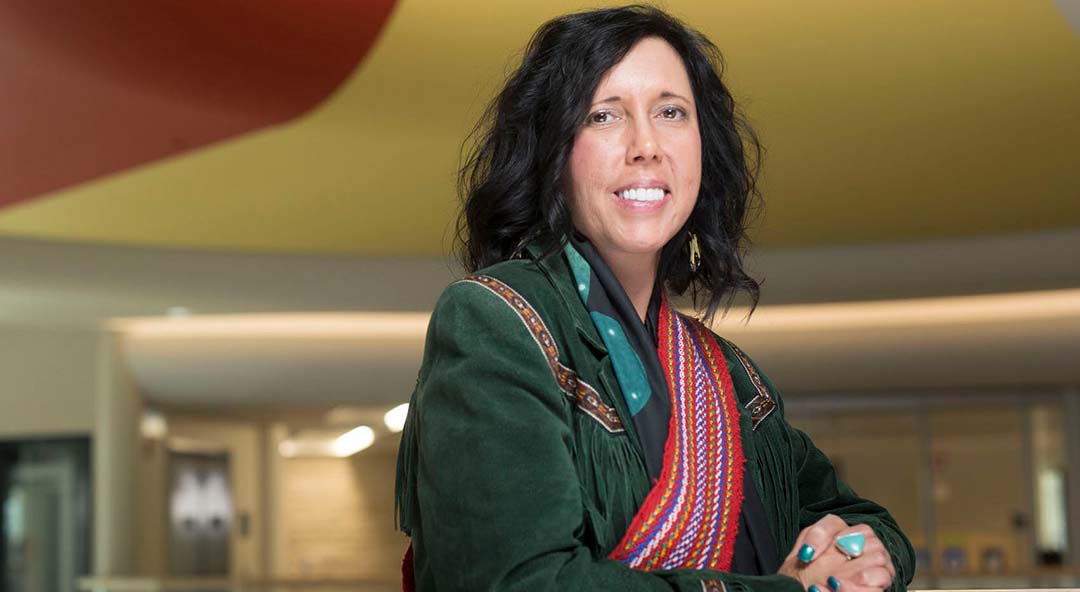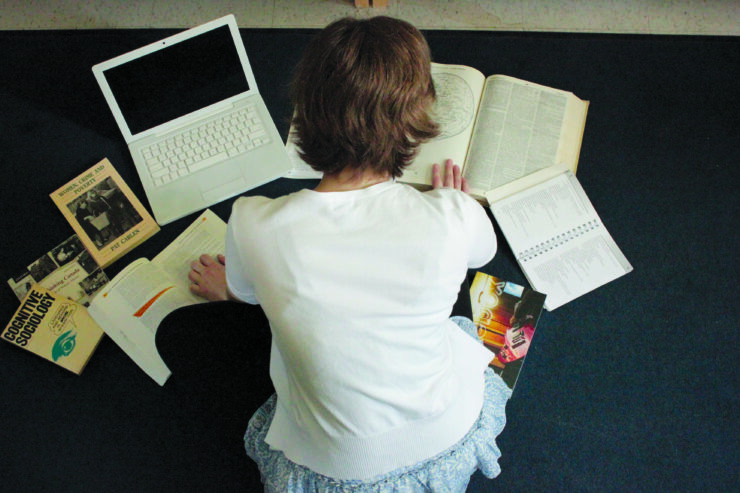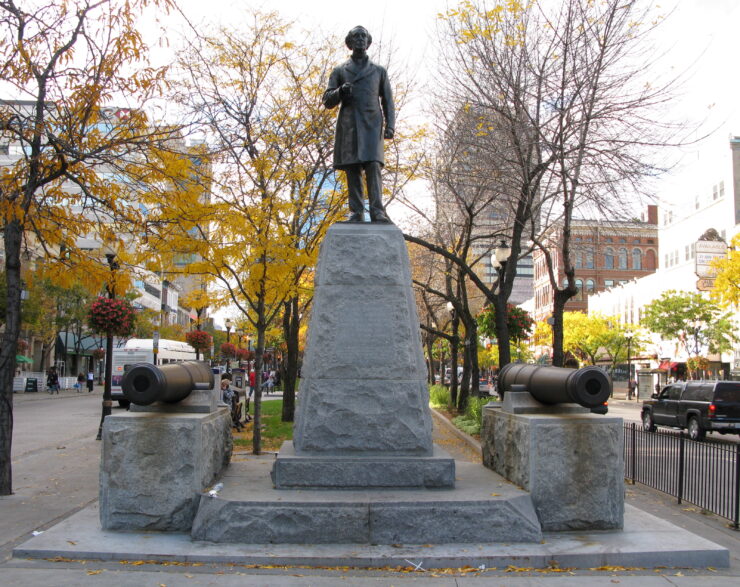What is with the outrage of pretending to be another race?
In late October, CBC released an article investigating the true heritage of Carrie Bourassa, a University of Saskatchewan professor and the scientific director of Canadian Institutes of Health Research’s (CIHR) Institute of Indigenous Peoples’ Health. Bourassa has been accused of pretending to be Indigenous, an egregious accusation during a year in which 1,300 unmarked graves have been found at former Canadian residential schools.
A collective of her colleagues, as well as media reporters, determined that Bourassa was actually a white woman who had cultivated a false Indigenous identity for years.
Bourassa is just the latest addition in a specific line of white folks pretending to be a race that they aren’t, including Rachel Dolezal — who pretended to be Black and even Elizabeth Warren, representing a slew of people who claim Indigenous heritage.
But why the outrage? What’s the big deal with pretending to be another race?
Pretendings of the past
Some may define Bourassa’s manufactured identity as an instance of passing, which is “a process of crossing over from one identity to another, usually a higher status identity” as defined by author and journalist Lipika Pelham.
Passing may become necessary for safety and ensuring livelihood. Amina Mire, an associate professor in sociology at Carleton University, says that passing may be legitimate when their lives might be in danger.
“[An important] point is that passing is a very complex issue. For example, passing is legitimate when living under fascism [as seen in the past in the ] Nazi state, or when one is forced to hide their sexual orientation in [a] homophobic society,” she said.
However, it does not hold the same value if a privileged person is pretending to be someone who is disadvantaged. So why do it?
Mire says that Bourassa’s facade was about ‘banal careerism’. “Harm comes from deception,” she said in an interview. “If Carrie Bourassa had truly cared about Indigenous people, she could have forged friendship and allyship with Indigenous communities. But that was not her aim.”
“Neither CIHR nor the University of Saskatchewan demanded Carrie Bourassa to produce credible evidence to show her Indigenous identity. In this case, passing is a new form of rebranding white settler colonizers as Indigenous people.”
Veldon Coburn, an assistant professor in the U of O’s faculty of arts, has observed that public perceptions of Indigenous people have significantly changed in comparison to 10 or 20 years ago, which may relate to these cases of deception.
“It wasn’t something that people wore on their shoulders as a badge of pride. We were starting to do a lot of work to elevate the esteem that Indigenous identity had in the general Canadian population,” he said.
Coburn said that Indigenous people would often adopt stereotypical tropes such as the ‘noble savage’ when integrating themselves with non-Indigenous audiences, which would further misrepresent Indigenous peoples.
“They give non-Indigenous-centered organizations and peoples especially employers a sense of feeling good,” he said. “They’ve achieved their saviorship [saying], ‘we did hire an Indigenous person on staff here. They’re one of the good ones.’ And it’s same, perhaps within academia.”
Both Mire and Coburn argue that by pretending to be Indigenous people while disingenuously conducting research on Indigenous communities is perpetuating the colonialism that universities and government agencies try to publicly deconstruct.
“This creates mistrust,” said Mire. “It reinforces white supremacy and colonial deception. It also opens up historical wounds of Indigenous people and defers the healing process of Indigenous people from the pain and traumas caused by centuries of colonial oppression.”
Improper qualifications
Both Dolezal and Bourassa were well-respected academics with prestigious positions under their belt — Dolezal was a chapter president of the National Association for the Advancement of Coloured People (NAACP) and Bourassa led a federal branch of health and community research in Indigenous communities.
But how can they accurately represent these communities when they have not properly lived similar experiences or share similar physiological responses?
You do not need to be Indigenous to study Indigenous health or culture, and Bourassa clearly has the resume to do so. Reasons as to why she adopted this identity are still unclear, yet that does not undermine the harm she has done to Indigenous peoples with this deception.
“You’re talking for people that you don’t even know, for example, generational trauma. You don’t live their lives, you don’t know their stories,” said Sadjo Paquita, a PhD student in feminist and gender studies at the University of Ottawa.
“I think the repercussion is that everybody can just come and go on what they want. This is not how it works, because we created knowledge that that will be used by so many people as truth [and knowledge].”
Paquita went on to say that by having deceptive people in charge of research and teaching, the results they produce will reflect their dishonesty.
“You don’t have to trust everything you read, but most of the time a scientific article or research is something that you can trust. You think it’s [peer] reviewed.”
Coburn outlines that historically, Indigenous populations have faced atrocities at the hands of colonial authorities, such as government health agencies, so for them to be deceived is unacceptable.
“[Health agencies] also [integrate] themselves with Indigenous populations to get access for the purposes of doing research, for advantages and having that particular access that other researchers don’t have,” he said. “And [so] you’ve lied to your human subjects, so it crosses the boundaries and blurs the line of the ethics. I think it’s entirely unethical.”
Identity inquiries
Following the news that several of its professors were pretending to be Indigenous, Queen’s University announced that it would review its Indigenous identity process regarding staff and faculty beginning this month.
Indigenous Corporate Training defines self-identification as “the voluntary, confidential, self-described declaration of Indigenous identity.”
Veldon Coburn, an assistant professor in the faculty of arts at the U of O, says that the Indigenous academic community has been long aware of these fraudulent identity claims.
“You grin and bear it as an Indigenous professor [when] your university employer is telling you and telling everyone else that this established hire they’ve had for a long time is Indigenous,” he said.
With several post-secondary institutions — including the U of O — undertaking several initiatives to Indigenize their campuses, restructuring their self-identification processes might be a step in the right direction.
“If you’re on Algonquin territory, go to the Algonquin nation and don’t just pick up some straggler off the street who’s waving their hand saying ‘I’m Indigenous’ because you know, that’s the case all over Ottawa,” said Coburn. “[Organizations and institutions] actually have to respect Indigenous sovereignty by going to the nations and their representatives themselves.”
Mire believes that producing evidence claims of being a racialized minority might help prevent these kinds of deceptions.
“While self-identification is critically important, when one lays claim to a group or racial identity in order to access resources in the name of equity and inclusivity, one must be required to show evidence that one belongs to the group or the race or ethnicity one is using to access these resources,” she said.
Paquita understands that shifts in intersectionality can be confusing, but there should be greater instances of allyship and collaboration to resolve these issues.
“Being an academic, it’s more approaching those people asking them about their experience,” she said. “So it’s more that you’d come to these people and you ask them about their experience if they are okay with you researching certain experiences and how they can help you.”
Coburn went on to say that although universities may have good intentions with hiring Indigenous academics, this ‘pretendian’ matter may be one on multiple university campuses.
“It goes to the heart of the highest standards of academia, which is its integrity,” he said. “So you have somebody who’s who’s deliberately propagating falsehoods about who they are kind of using that to produce their research, and then also coloring the university in their Indigenous [vernacular].”




